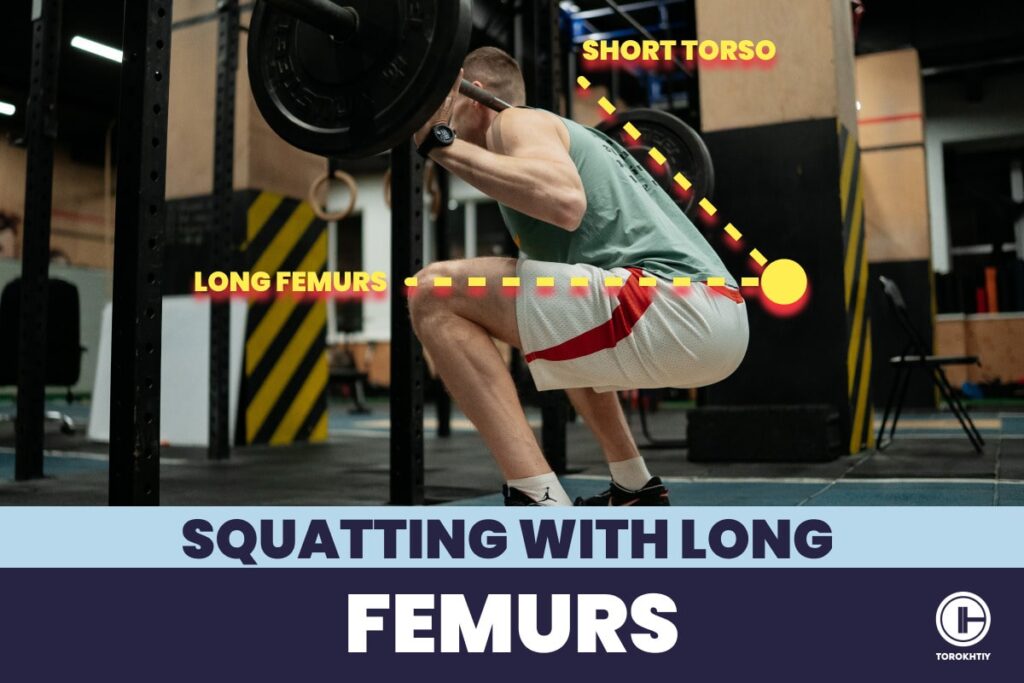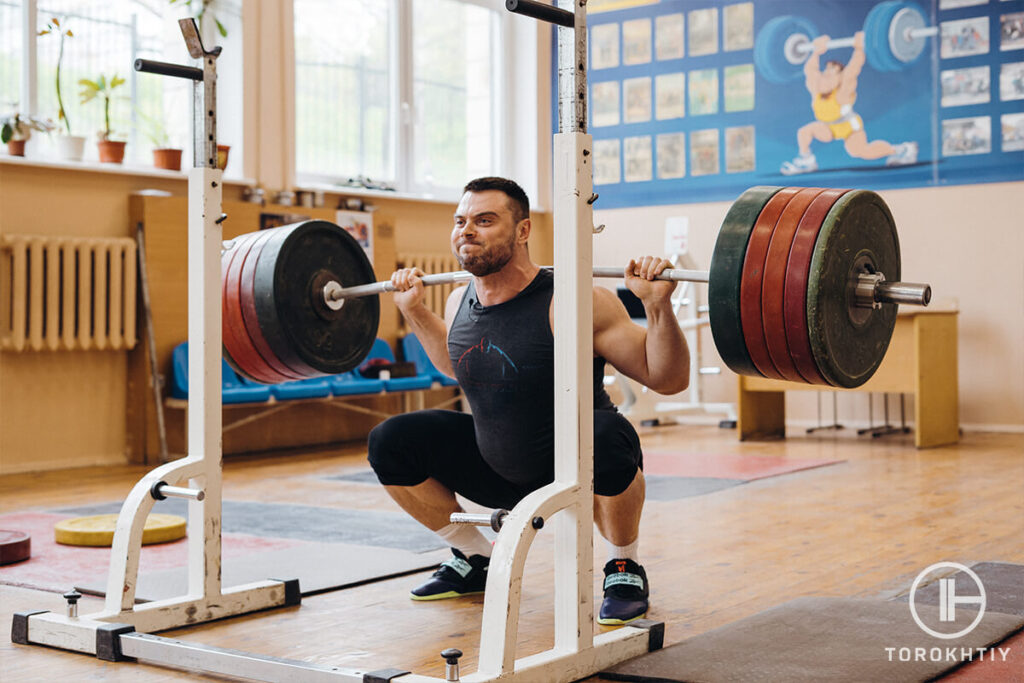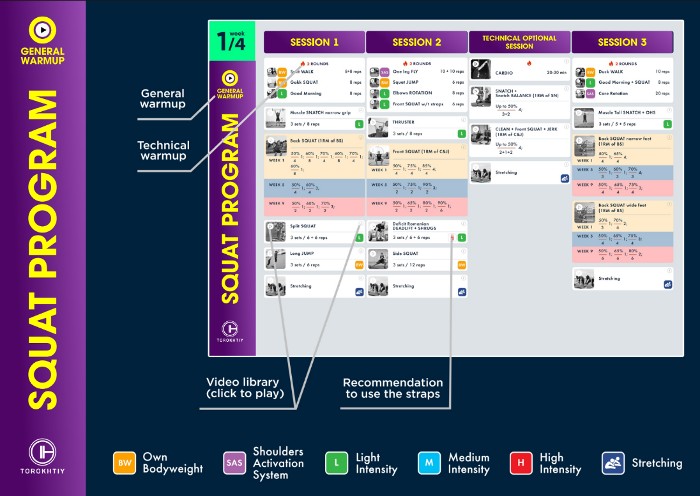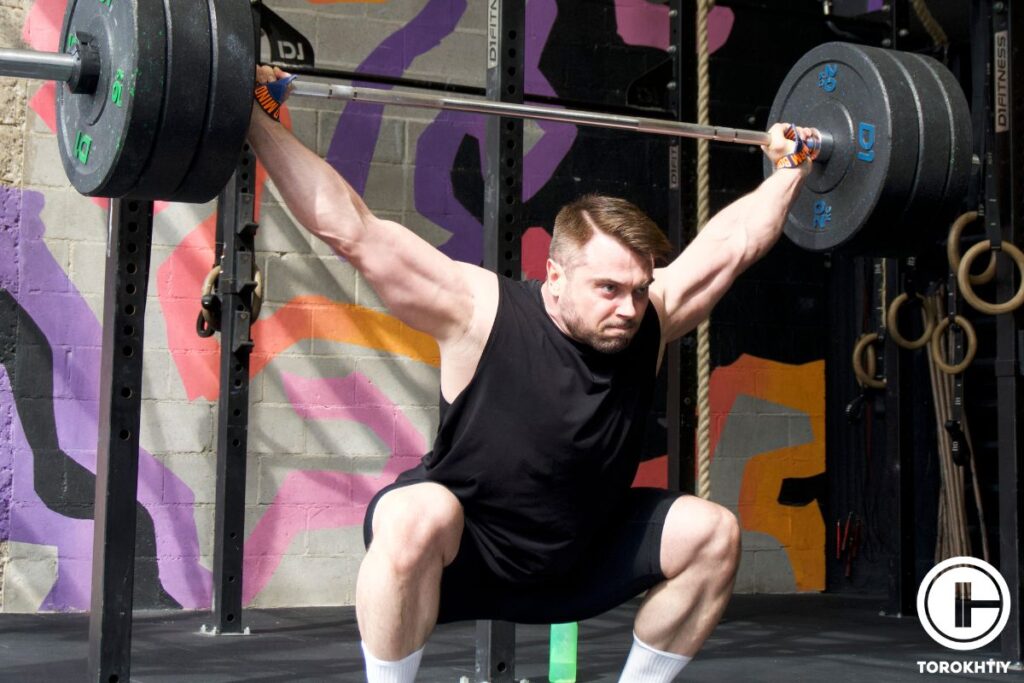Squatting With Long Femurs: Tips For Lifters With Long Legs
Author:
Unlock your full potential by engaging with our experts and community! Have questions about your fitness journey or looking for expert advice on weightlifting techniques? Don’t hesitate — leave a comment below and Sergii Putsov will provide a personalized answer and insights to help you reach your goals.
Torokhtiy is reader-supported. Some links are affiliate links, and we may earn a commission at no extra cost to you. See our disclosure page for details.
Squats can be a beneficial exercise to include in your gym routine, but does anything change when squatting with long femurs? A long femur to tibia ratio can change things up with squat mechanics, in comparison to an individual training with shorter femurs. Having long legs means you’ll want to adjust your form so you can squat correctly for your body.
So, what’s involved when squatting with long femurs?
Squatting with long femurs can affect squat depth, bar placement, and back positioning when completing the movement. Taking into consideration squatting with long legs, means you can adjust your form and move correctly for your body’s skeletal differences when compared to the average lifter.

What Are Long Femurs and How To Define That You Have Long Legs?
Although differential between individuals, standard femur length can be anywhere from 35 cm to 47 cm in length, so a femur that surpasses these figures can be considered long. Leg length should equal around 50% of total stature of the human body, but as we are all unique, this can vary from person to person, but this is generally how to tell if you have long femurs.
If half or more of your body is represented by your legs, then it’s safe to say you fit into the category of a long-legged individual. It’s impossible to change your femur length since it’s part of your skeleton as a thigh bone, but it is feasible to make a few small adjustments to your workout routine so you can improve your long femur squat form.
When you complete back squats with long femurs, it’s not uncommon for people to be surprised by your technique and tell you that your torso has too much of a front lean. Squat form for tall guys is noticeably different from lifters who have shorter legs. The length of the femur means you have to adopt more of a front-lean to remain balanced with the bar on your back.
Tips From the Champ
Avoid comparison! Although there is a lot to say about having general good form the gym, we are all built differently and this can affect how we lift. From mobility and injury to anatomy, it’s unsurprising to hear your squat may look different from the guy on the rack next to you. If you’ve taken time to work on your form and have considered the length of your femurs, trust you’re on the right lifting path for your body.
Olympic Weightlifting Champion
Proper Squat Technique For Athletes With Long Femurs
We are constantly told to avoid leaning forward in a squat, but is this the right advice if you are tall with long femurs? Longer femurs mean you will in fact need to lean forward more in a squat to account for your long thigh bones. During a squat, having good balance is fundamental, as creating a stable base to complete the movement helps you do so safely and effectively.
For taller individuals, form needs to be adjusted into a long femur squat where the lifter will have a more pronounced forward lean to achieve better depth, than an athlete with shorter femurs who can stay more upright at the bottom of the squat. Performing squats with the correct technique when you have long femurs can be difficult, but it’s possible to improve form by adjusting your stance, moving the bar to a low bar position, and lowering the weight until you’ve found the best position for your body.
Tips From the Champ
Filming yourself can be a useful way of tracking how your squat form changes. When watching the recording back, follow the path of the bar and see if you’re leaning too far forward in the squat. The goal is for the bar to remain in line with the middle of your foot, but when leaning forward, weight can instead shift towards the knees, with the bar over the toes.
Olympic Weightlifting Champion
How Can Long Femurs Affect Your Squat?
Knowing how to squat with long femurs will provide you with the knowledge you need to perfect your squat form and work with your body’s anatomy. Long femurs can influence squat technique, impacting various factors such as the ones I’ve listed below.

1. Squat Depth
There are some baseline goals when squatting, such as keeping the bar over the middle of the foot during a back squat and getting down low in the squat to activate leg and glute muscles. The way a person squats, however, depends heavily on their anatomy and mobility, especially for those with long femurs. Depth can be affected when squatting with long femurs as the individual will have to lean forward more to remain balanced, in turn, affecting how low they can comfortably go in a squat.
Instead of focussing too much on the depth of your squat if you have long femurs, take time to first figure out what feels right for your body. Wearing weightlifting shoes or elevating your heels can be useful for achieving a deeper squat position, where you can still plant your feet and push your knees outwards while reducing the forward lean.
Follow us!

Free!
Get a 2-week Weightlifting Program as a bonus for the subscription to kickstart your training plan!

Free!
2. Bar Placement
High bar and low bar squats have various benefits, and where you decide to put the bar can impact how you move during the exercise. A high bar squat involves more of an upright position at the bottom of the squat, whereas a low bar squat requires a slight forward lean and is associated with lower erector spinae and quadriceps activity.
Maintaining an upright position for those with long femurs can be difficult, affecting balance and depth, therefore, a low bar placement may be more beneficial for squatting with long legs.
🔻GET A FREE PROGRAM DEMO: 12 Week Squat Program by Oleksiy Torokhtiy

Do you want to double your squat strength? In just 12 weeks, you’ll be able to boost your squat results.
Enter your details and get a free demo (1 free week) of the squat program straight into your inbox.
3. Back Rounding
Rounding the back is never a wise idea when squatting, as the goal is to maintain stability and strength through the trunk of the body. A rounded back when squatting isn’t optimal form and has the opposite effect, potentially leading to injury. Individuals with long femurs and short torsos may be more tempted to round their backs when squatting.

This is because they tend to have more of a forward lean to account for their long femurs. Widening your stance during a back squat can help improve squat form for tall guys by lowering the risk of a rounded back and allowing more depth to be reached.
Squatting Mechanics With Short vs Long Femur
Generally speaking, correct back squat form entails the bar staying in line with the middle of the foot during the entirety of the movement. This is achievable by maintaining stability throughout the movement, standing with feet planted at the correct distance apart, bracing the trunk, and distributing weight evenly.
For individuals with a short femur, achieving this form is arguably easier than someone with long femurs, as they can stay relatively upright while reaching good squat depth. Long femurs make it harder for the lifter to achieve depth and an upright position, as they will need to lean forward to remain balanced.
Many may believe squatting with a lean is bad form, however, those with a short torso and long femur will need to incorporate a lean into the movement to keep their balance. This is due to their anatomical differences from those with a differently proportioned skeleton. If you have long legs and find a long femur squat uncomfortable, try widening your stance, raising your heels, or getting familiar with low bar squats so you can get into a better position where depth can be improved.
FAQ
Does Femur Length Affect Squat Depth?
Femur length can affect squat depth as it means the lifter will likely have a considerable lean when squatting, to achieve better depth. Even with a forward lean, however, it can be difficult to achieve good depth with a long femur squat form. To achieve a lower back squat, lifters with long femurs can try a low bar position instead which can help reduce the forward lean, alongside taking a wider stance to accommodate long legs and keep the bar over the middle of the foot.
Is Front Squat Better For Long Femurs?
Front squats are an exercise those with long femurs may struggle to perform well from the off. Lifters with long femurs tend to already have a significant forward lean in a squat position, so adding weight to the front of the body isn’t wise if you’re finding it hard to remain balanced when achieving depth. It may be more beneficial to elevate the heels and achieve correct form with a goblet squat to familiarize yourself with how it feels to have weight at the front of the body, before diving into front squats.
Conclusion
Squatting with long femurs can be done, but it’s essential to take a close look at your form to avoid a rounded back and be able to achieve good depth. Knowing how to tell if you have long femurs will indicate whether you need to adjust your squat form to accommodate long legs while achieving the desired depth and stability.
Do you have long legs? If so, has it affected the way you squat? Let us know in the comments!
Also Read:
- Weightlifting Percentage Chart: Benefits & How to Use It
- What Muscles Do Squats Work? (Lifting Coach Explains)
- Squat Bar Placement: Does It Matter?
- Squat and Deadlift Same Day: Right or Wrong?
- Spotter’s Handbook: How to Spot a Squat?
- How Much Does A Squat Bar Weigh? Standards Explained
- Front Squat Grip Secrets – Techniques & Tips
Referenses:
- Yohei Takai, Yuko Fukunaga, Eiji Fujita, Hasashi Mori, Takaya Toshimoto, Masayoshi Yamamoto, and Hiroaki Kanehisa, “Effects of Body Mass-Based Squat Training in Adolescent Boys”, National Center For Biotechnology Information, https://www.ncbi.nlm.nih.gov/pmc/articles/PMC3761779/ (Accessed February 11 2024)
- Anastasios Vasilopoulos, Gregory Tsoucalas, Eleni Panagouli, Gregory Trypsianis, Vasilios Thomaidis, and Aliki Fiska, “Odontoid Process and Femur: A Novel Bond in Anatomy”, National Center For Biotechnology Information,
https://www.ncbi.nlm.nih.gov/pmc/articles/PMC7176326/# (Accessed February 11 2024) - Barry Bogin and Maria Inês Varela-Silva, “Leg Length, Body Proportion, and Health: A Review with a Note on Beauty”, National Center For Biotechnology Information,
https://www.ncbi.nlm.nih.gov/pmc/articles/PMC2872302/# (Accessed February 11 2024) - Roland van den Tillaar, Tom Roar Knutli, Stian Larsen, Biomechanics and Control of Human Movement Volume 2, https://www.frontiersin.org/articles/10.3389/fspor.2020.604177/full (Accessed February 11 2024)
- Gregory D. Myer, Adam M. Kushner, Jensen L. Brent, Brad J. Schoenfeld, Jason Hugentobler, Rhodri S. Lloyd, Al Vermeil, Donald A. Chu, Jason Harbin, and Stuart M. McGill, “The back squat: A proposed assessment of functional deficits and technical factors that limit performance” National Center For Biotechnology Information,
https://www.ncbi.nlm.nih.gov/pmc/articles/PMC4262933/ (Accessed February 11 2024)
Why Trust Us?
With over 20 years in Olympic weightlifting, strength training, nutrition coaching, and general fitness our team does its best to provide the audience with ultimate support and meet the needs and requirements of advanced athletes and professional lifters, as well as people who strive to open new opportunities and develop their physical capabilities with us.
By trusting the recommendations of our certified experts in coaching, nutrition, and sports training programming, as well as scientific consultants, and physiotherapists, we provide you with thorough, well-considered, and scientifically proven content. All the information given in the articles concerning workout programming, separate exercises, and athletic performance, in general, is based on verified data.
The product testing process is described in more detail here.
Author: Sergii Putsov
Head of Sport Science, PhD
Best Results: Snatch – 165 kg,
C&J – 200 kg
Sergii Putsov, Ph.D., is a former professional weightlifter and National team member, achieving multiple medals in the 94 kg weight category at national competitions. With a Master’s degree in “Olympic & Professional Sport Training” and a Sport Science Ph.D. from the International Olympic Academy, Greece, Sergii now leads as the Head of Sport Science. He specializes in designing training programs, writing insightful blog articles, providing live commentary at international weightlifting events, and conducting educational seminars worldwide alongside Olympic weightlifting expert Oleksiy Torokhtiy.




Still have questions after reading our article? Unlock your full potential by engaging with our experts and community! Don’t hesitate — leave a comment below and Sergii Putsov will provide a personalized answer and insights to help you reach your goals.